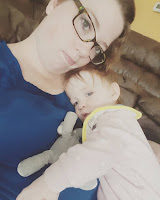 |
Think about the process. How did we get to where we're at right now, technologically speaking. In other words, how has tech, specifically Google Drive, helped move the curriculum, collaboration, and student work along?
Here's a brief overview of the project:
- Driving Question learners will strive to answer - "How can we make America great?"
*Disclaimer: This is in no way based on Donald Trumps campaign. It actually came out of the video we used for our Entry Event from the pilot episode of the TV show Newsroom ("America Isn't the Greatest"). - Objectives - Students will...
- Improve research skills as they enter into the initial inquiry process and research the topic of their choice
- Analyze the issue of their choice and attempt to figure out why it's an issue and what can/should be done about it based on past, present, and future facts
- Work towards understanding how to form a strong argument based on credible support
- Integrate support throughout an argument in order to persuade their audience of "Appropriate Decision Makers"?
- Review business letter format including layout and tone while considering their audience
This, however is where I want to focus my post. As a part of the tech integration specialist team in my district we often hear people looking for the latest greatest websites and apps to bring into their classroom. While being innovative is all well and good, I'm constantly telling other facilitators, "Less is more". In my classroom, I will occasionally bring in a cool website or app or I'll suggest an extension to a student if I think it will be useful. However, the tech I most commonly rely on day in and day out is Google Drive.
For the writing/revision part of the project, the use of Google Drive was especially important for planning, feedback, and revision (over and over).
 |
| Top: Sample of a bullet outline created in Google Docs. Bottom: Sample of a visual (flow chart) outline created in Google Drawings. |
Planning
Students started the transition from research by creating an outline of their argument. Based off a previous reading they had to have claims/subclaims, counter claims, a proposition, and credible support. They did this one of two ways - through Google Documents in a bullet style outline or in Google Drawings through a flow chart style outline. Students were given an example of both the bullet outline and the flow chart outline to demonstrate what each looked like.I did, however, need to clarify with students that those were meant as examples only and they weren't meant to be copied (ie-"Make a Copy" function in Google Drive). The visual outline posed an issue I didn't even think about. Students were copying the sample and then trying to make their arguments fit within that sample (2 claims, 1 counterclaim, 4 subclaims, etc.). I had to clarify the next day that they were to break from that and do what worked for their arguments (see visual outline sample 2 at the end of this post).
Writing First Draft
When, and only when, their outline had been reviewed and edited if needed, students could move on to the writing process. We talked about making sure they understood their direction before they just jumped into their writing. So often students just start typing on the keyboard and when they're done they've really said nothing, or it's just so unorganized that it seems like they've said nothing. This project also has the added difficulty of writing a letter as a group of three to four.First drafts had to be formatted in proper block business letter format and when submitted needed to look like a full, complete letter (no more than 2 pages).
Give Feedback
At this point, I gave students feedback via Google Document's comment function. I did very little with the "suggesting" function at this point and tried to avoid simply "editing". I wanted to look for big ideas - claims, subclaims, counterclaims, and credible support. By commenting in Google Docs students were able o walk into class and get their feedback instantly, and the majority of students started discussing the feedback as a group and making revisions right away. I also LOVE that I have a history in both past comments and whether or not they accepted/rejected suggestions.Check out the table below for different ways to give feedback in Google Docs.
 |
| Click to view the original in Google Drawings. |
Revise
Now, after they received their first round of feedback students went into revision mode. Something I like to use to track revision is the Draftback Add-On. While the revision history (Shift + Alt + Ctrl + H) is nice, Draftback provides much more data that revision history doesn't including when the students worked on the document and how long the writing session lasted. My students seem to push themselves more when they can see that small Draftback revision number staring them in the face, and some even turn it into a competition.Repeat
As we continue through 3-4 drafts and into the final draft, students will continue to receive feedback both from me and their peers. When we're ready for final drafts students must change the document name to "final draft", and they must resolve any comments and either accept or reject any suggestions to submit a "clean copy" of their document.To view more samples check out the project folder in Google Drive!














